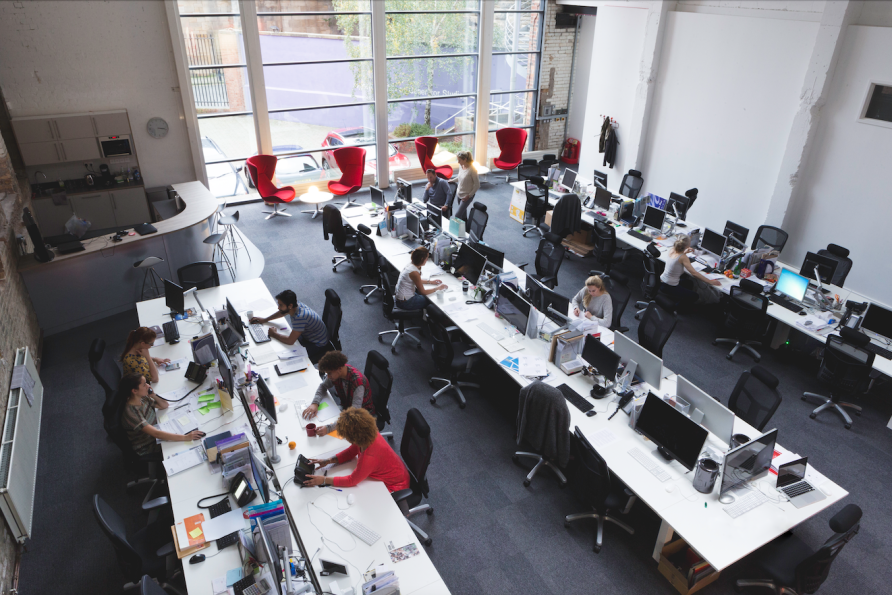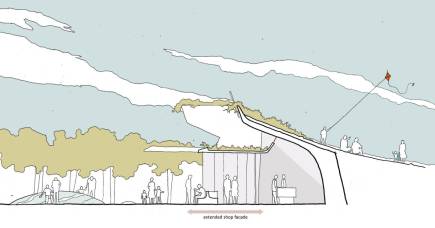The “new normal” in the workplace

When pandemic restrictions banished workers from offices into their homes, organisations scrambled to keep workers functioning away from HQ.
Suddenly dining tables, sheds, bedroom corners all around the world were set up as offices.

Studies show the appetite for access to flexible working arrangements was already there before the pandemic started.
Working from home during the pandemic and lockdowns has not been an easy task, with many struggling to adapt to new ways of working, technology, homeschooling, isolation and burnout to cite just a few challenges.
After the initial shock, workers have had time to experience the advantages of remote working with the vast majority now questioning the need to go back to HQ at all.
Here, we share and discuss five lessons learned from a range of research conducted in Australian workplaces pre and post-2020.
1. Flexible working
Leaders surprised by the hesitance of the workforce to go back to HQs full time may not have been paying attention to what was already happening before the onset of COVID.
A global 2018 study showed that workers who had control over when and where they worked were more likely to see themselves at the same company in five years. These results show that the appetite for access to flexible working arrangements was already there before the pandemic started.
The trend continues post-pandemic, where seven in ten workers would like to retain access to flexible ways of working.
The top five benefits from remote working identified by Australian workers were not having to commute, more time with family, ability to perform more focused work, work-life balance and less stress at the start of the working day.

Workers who had control over when and where they worked were more likely to be at the same company in five years.
It took workers just two weeks to adapt to working from home during the 2020 lockdowns. 65 per cent of workers also reported that their ability to perform their work away from the office was the same or better than when working in the office.
Despite the positive aspects of remote working, it was not all smooth sailing.
Workers also reported significant challenges with internet connectivity, dissatisfaction with furniture ergonomics or set-up, increased stress and burnout, isolation from colleagues and inability to establish a consistent routine.
Our research shows that overall, 69 per cent of workers indicated that they would like to be allowed to work away from the office two to three days a week.
People are not saying that they don’t want to go back into the office – they simply want some control over when and where they work.
With that in mind, organisations need to rethink not only their office space needs but work practices – going beyond the ‘where’ to also reflect on the ‘how’ people work is crucial to achieving a high-performance workplace post-COVID.
2. Workplace design
Before the pandemic, Australian workers reported the main sources of dissatisfaction with open-plan offices were insufficient or inadequate spaces to concentrate or perform deep-thinking work, meeting rooms, spaces for private conversations, breakout spaces and an overall workplace layout that does not cater for work activities.
The significant design and performance shortcomings of open-plan offices just amplified the benefits of working remotely.

Organisations can no longer ignore the design and performance issues of workplaces.
Four in every ten workers said they would like to see major changes in the design of their office post-COVID.
These findings indicate that organisations can no longer ignore the design and performance issues of workplaces, with the pandemic highlighting that there is no room for underperforming environments to continue to exist.
3. Healthy workplaces are here to stay
The pandemic has laid bare the links between the performance of Heating, Ventilation and Air Conditioning Systems (HVAC), Indoor Air Quality (IAQ) and health – especially when it comes to airborne virus transmission.
Under the living with COVID scenario, there is an urgent need to scale up IAQ monitoring practices and operational performance improvements across the built environment, including HQs, to ensure safe indoor environments for people to return to.
Further, the pandemic has also highlighted the threat posed by the way we work and where we work on our physical and mental health.
During the 2020 lockdowns in Australia, our study found that three in every ten workers reported the inability to exercise as one of the challenges faced while working from home.
Survey data from the first half of 2021 still show a similar trend which is worrying considering that life in most states was at a “COVID normal”.

The pandemic has also highlighted the many positive aspects of being physically together at work.
Workers also reported issues with physical discomfort and pain, very likely from the challenges of establishing an ergonomic office set-up remotely.
Feelings of isolation and lack of sense of belonging during lockdowns can have a negative impact on workers’ mental health and overall wellbeing.

Designing-in difference
With the pandemic placing the design and experience of workplaces but also its performance under the spotlight, it is expected that links between workers’ health and wellbeing will continue to be a recurring topic of conversation.
The WELL Health & Safety rating has provided organisations with a much-needed guide to safe-proof workplaces for people to return to. Moving forward, the uptake of WELL certification is likely to increase, especially with the recent shift towards ‘living with COVID’ in Australia.
4. People and workplaces
The pandemic has reminded us that many aspects of workplaces were failing people before, like the ability to perform deep work while at the office without unwanted interruptions.
At the same time, the pandemic has placed the many positive aspects of being physically together at HQ under the spotlight. The ability to socialise, innovate and learn because of impromptu interactions that are best to happen in person.
Research conducted during Australian lockdowns shows that most employees missed the social connections of the office.

The collective experiences of this pandemic should act as a catalyst for organisations to reimagine workplaces.
This includes a spectrum of functions from work social interactions with our teams, clients and colleagues to mentorship, camaraderie, learning and incidental ideations in corridors supporting an idea that many now agree on – that the core purpose of offices moving forward should be togetherness.
As documented previously, a sense of belonging forms a key part of our inherent motivation, critical for sustained work performance and personal wellbeing.
5. Culture and leadership
Research suggests that thriving workplaces all have successful leadership, culture and quality workspaces. These factors combined are bound to have a significant influence on workers when attracting them back to HQs.
As these core pillars of organisational success continue to stand the test of the COVID pandemic and its future challenges, the key will be adaptability within the new environmental context.
Historically, places destroyed by earthquakes, tornados and floods are often replicated with the same flaws of the original designs. This happens because familiarity is more important than improvement, it speaks to the deep connection humans have with ‘place’ and its role in memory, nostalgia and creating meaning.
We can observe many of the same regressions happening in leadership conversations and messaging of organisations around the globe with their ‘return to work’ campaigns.
The collective experiences of this pandemic should act as a catalyst for organisations to buck the trend and reimagine places and practices that deliver high-performance environments for thriving, post-2020 workers.
This article was written by Associate Professor Christhina Candido and Dr Samin Marzban of the University of Melbourne and Iva Durakovic of the University of NSW. It was published by Pursuit.
Assistant Professor Candido is an architect with a PhD in Civil Engineering from the Federal University of Santa Catarina in Brazil and in Environmental Science from Macquarie University. Her research interest and expertise relate to design, experience and performance of spaces.















